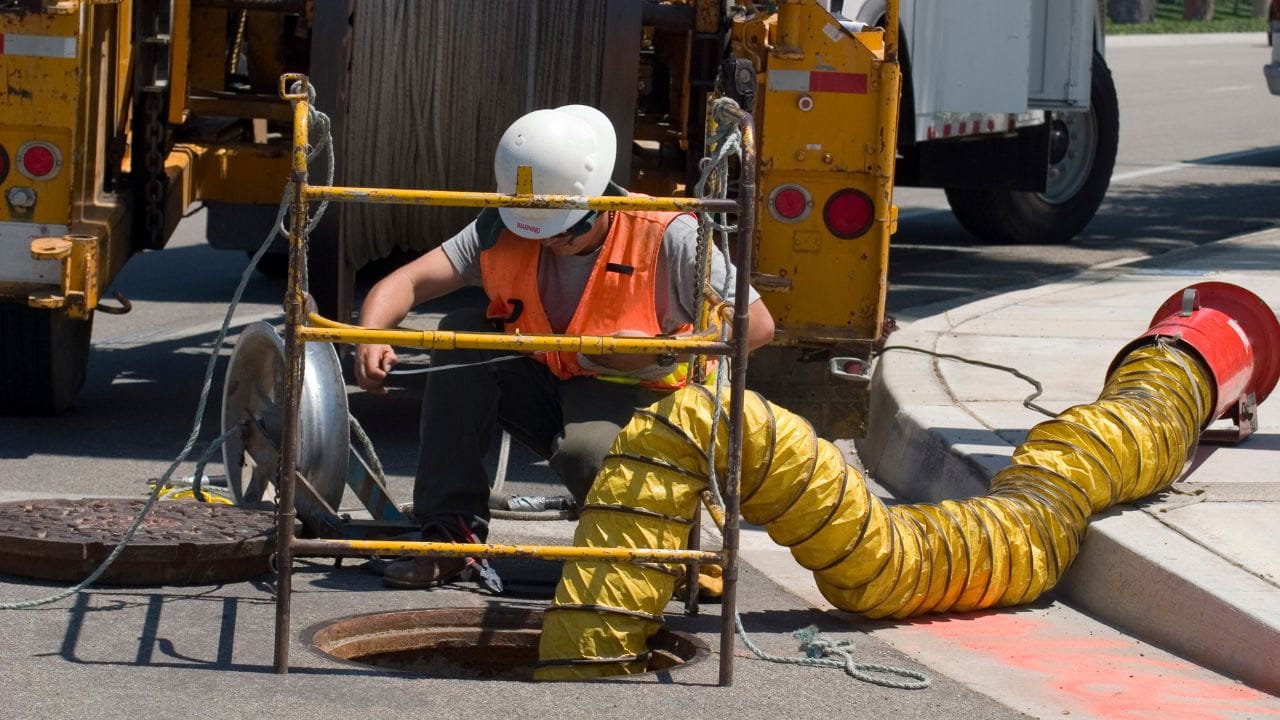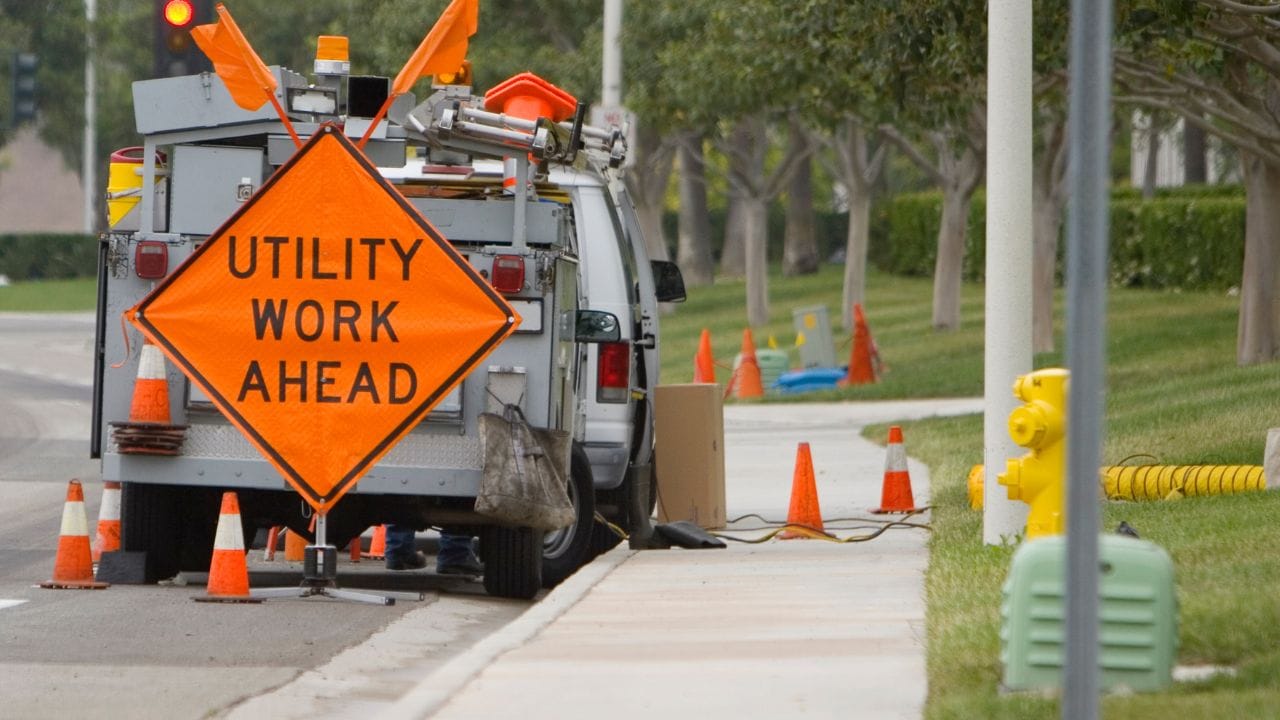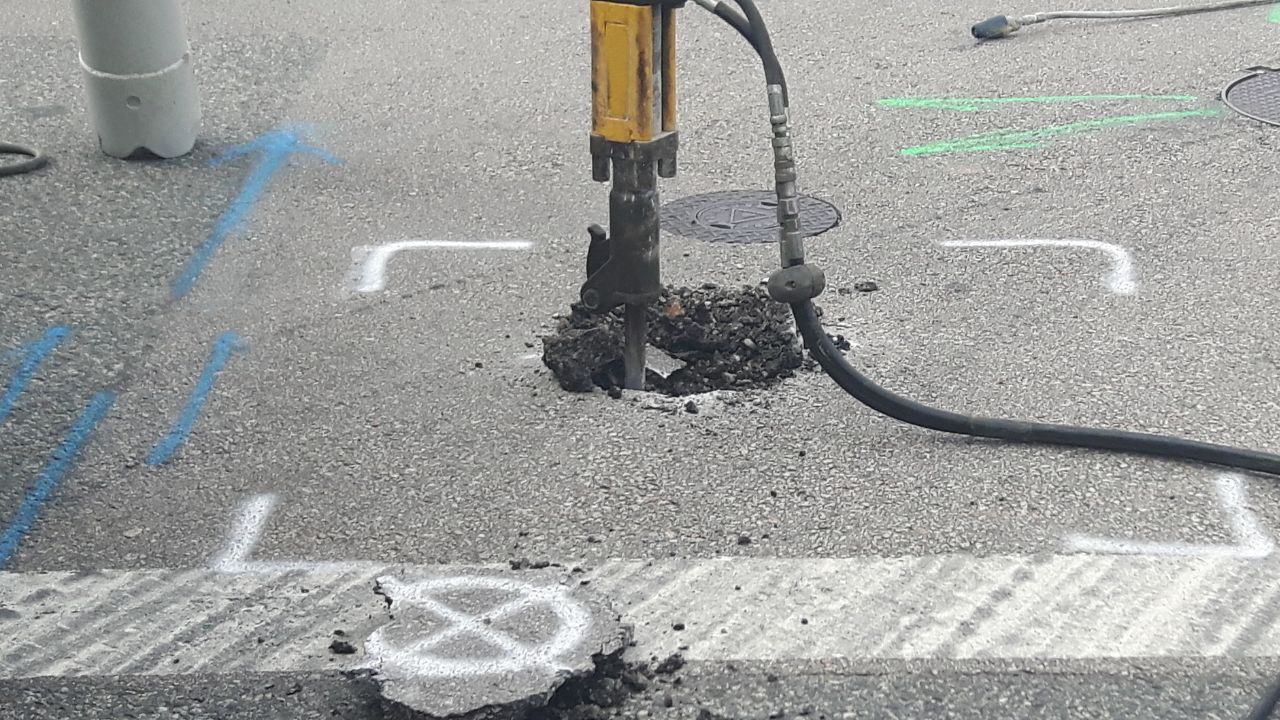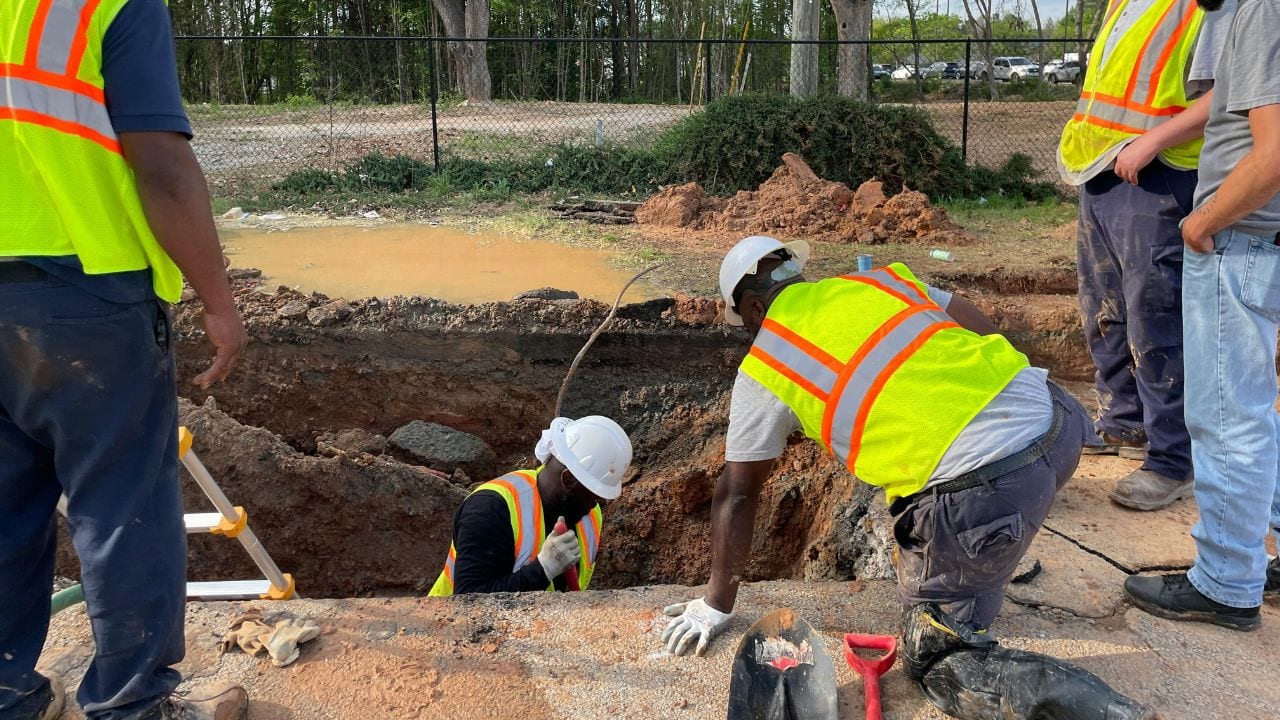Key Takeaways
- Contractor liability for utility damage depends on the contract and insurance coverage.
- Underground utility locating services prevent costly strikes and delays on construction sites.
- General liability insurance typically covers utility damage, but contractors should verify their coverage.
- Clear contract interpretation and legal advice can help contractors avoid construction disputes over utility damage.
- Using professional utility locating services ensures compliance with state requirements and reduces performance delays.
In construction, one of the most critical aspects to consider is liability. When things go wrong, especially concerning utility damage, determining who is responsible can be a complicated process. Whether you’re a general contractor or an independent contractor, understanding your responsibilities and insurance requirements is crucial.
Utility strikes, such as damage to water pipes or gas lines, can result in significant delays, expensive repairs, and legal consequences.
This article breaks down contractor liability in the event of utility damage and why having the right coverage and reliable underground utility locating services is essential for protecting both your business and your clients.
What is Contractor Liability?
Contractor liability refers to the responsibility a contractor holds when something goes wrong on a construction project. Whether it’s due to faulty workmanship, construction defects, or property damage, contractors are legally responsible for the work they do. This includes the risk of damage to utilities such as power lines, water pipes, or gas lines.
General contractors, as well as specialized contractors, must have general liability insurance and professional liability policies in place to cover potential risks. These insurance policies protect contractors from financial loss if their work leads to property damage or personal injury. However, having the right coverage is just one part of the equation. It’s also important to understand how utility locating services play a role in preventing costly accidents.
Why Utility Strikes Happen and Who Pays for Them?
Utility strikes are a common issue on construction sites, often resulting in water damage, power outages, or even dangerous gas leaks. These strikes typically happen when underground utilities, such as water pipes or gas lines, are unintentionally damaged during excavation or digging. The responsibility for paying for these damages depends on several factors, including contract terms, the nature of the damage, and the contractor’s liability insurance.
If a contractor or subcontractor hits a utility line, they could be held liable for the damage, especially if they did not take proper precautions. In these cases, the insurance coverage a contractor carries is crucial. General liability insurance often covers property damage, but this varies based on the insurance company and the specific insurance policy number.
The Role of Underground Utility Locating Services
One of the most effective ways to prevent utility strikes is to utilize private underground utility locating services. These services help contractors pinpoint the exact location of underground utilities, such as gas lines, water mains, and fiber optic cables, before digging begins. Fast and accurate locating of utilities can significantly reduce the risk of accidental damage and protect your business from costly repairs and legal disputes.
In addition, using professional utility locating services ensures that contractors comply with local state requirements. It also provides peace of mind, knowing that you have taken the necessary steps to avoid strikes that could lead to property damage or personal injury claims.
How Insurance Plays a Role in Utility Damage
When utility damage occurs, the contractor’s insurance coverage can be a lifesaver. General liability insurance typically covers property damage, including damage to underground utilities, but it’s important to read the fine print. Contractors should verify that their insurance policy includes protection for utility strikes.
In cases of significant damage, the insurance carrier may be required to cover the costs of repairs, legal fees, and potential compensation claims. However, if the damage is found to be the result of negligence, the contractor’s employer’s liability or workers’ compensation insurance may come into play.
In addition to general liability, contractors working in certain industries—such as HVAC contractors or roofing crews—may need additional coverage like commercial auto insurance, product liability, or environmental liability insurance. These policies ensure contractors are fully covered for any liability, from defective materials to construction disputes.
Contractor Responsibility and Legal Counsel
Contractors must be aware of the liability clauses in their contracts, which outline their responsibilities in case of utility damage. Clear contract interpretation can prevent misunderstandings and help avoid disputes over who pays for damages. Legal advice is often needed to navigate construction defects, defective materials, and faulty workmanship coverage, ensuring the contractor’s interests are protected.
When utility strikes occur, contractors should immediately consult with an insurance professional to understand their coverage options. Whether you need general liability, workers’ compensation, or commercial insurance, it’s crucial to know what your insurance policy covers before facing utility-related claims.
How Utility Locating Services Help Reduce Liability Risks
Utilizing underground utility locating services is a proactive approach that not only prevents damage but also mitigates liability risks. With services like ground-penetrating radar (GPR) and 3D modeling, contractors can map out the location of utilities accurately. This level of precision helps avoid costly strikes and ensures that your business remains compliant with insurance requirements and local regulations.
In Arizona, utility locating services are essential for reducing performance delays, environmental liabilities, and water damage that can arise from utility strikes. These services help keep the construction process on track, saving both time and money while reducing the chances of construction disputes and legal complications.
Who is Responsible for Utility Damage?
Determining responsibility for utility damage on construction sites depends on the terms of the contract and the specific circumstances. Typically, the contractor or subcontractor performing the work is responsible for any damages caused by their actions, unless they can prove that they took all reasonable precautions, such as hiring a professional utility locating service in Phoenix, AZ.
If the damage is the result of faulty materials or design errors, responsibility may fall on the manufacturer, designer, or architect. In these cases, contractors may seek compensation through their general liability insurance or a claim against the responsible party’s insurance.
Protect Your Construction Business with Expert Utility Locating Services
Accidents involving utility damage can lead to significant financial consequences, property damage, and legal issues. As a contractor, ensuring you have the right insurance coverage and taking proactive steps, such as utilizing private utility locating services, is crucial to protecting your business.
Reach out now to make your next project safer! Call us at (714) 492-1380 if you are in California or (480) 535-0230 if you are in Arizona for more information or to schedule a consultation! We offer top-tier private underground utility locating services to help you avoid utility strikes and minimize liability. Let us assist you with precise utility mapping and underground locating services that ensure a safe, efficient, and legally compliant construction site.




